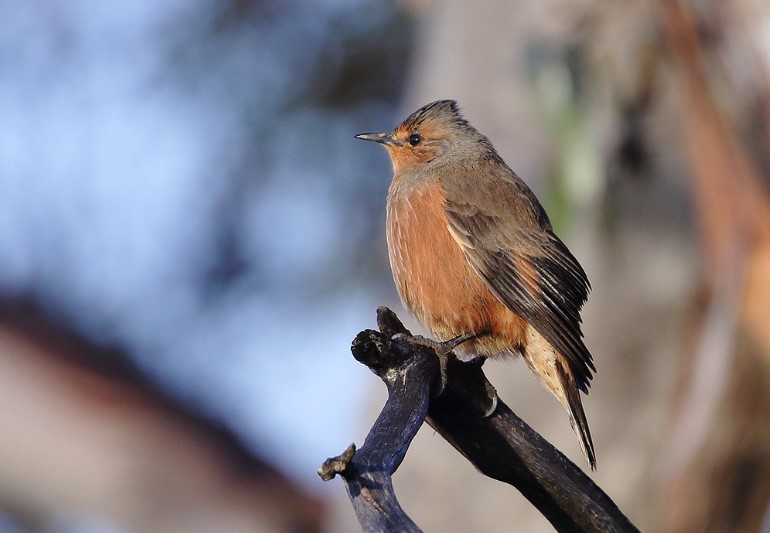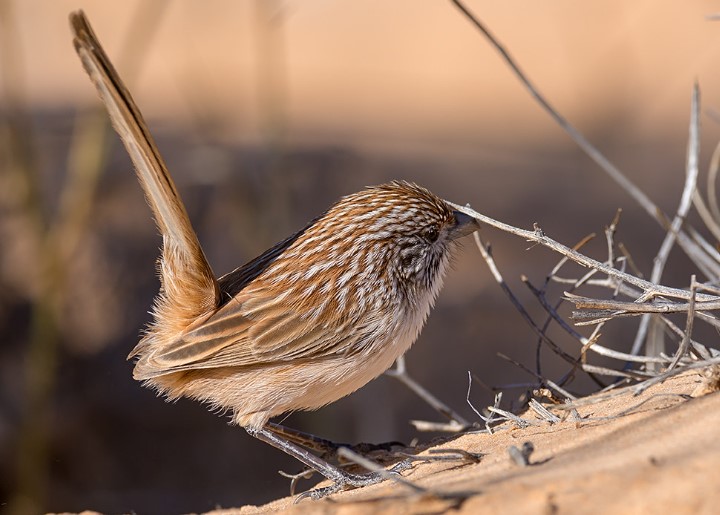The richly colored Rufous Treecreeper (Climacteris rufa) is the only member of its family Climacteridae. Southwestern Australia is home to this beautiful bird. This tiny treecreeper lives in open woodlands, like its southern cousin, the Brown Treecreeper. This charming bird is approximately 150–170 mm in length.
A Rufous Treecreeper can also be seen living in humid jarrah forests, although they tend to retreat over time because of human settlement. The treecreeper is also known as the woodpecker. As with the Western Yellow Robin and Blue-breasted Fairy-wren, the Rufous Treecreeper is a southwestern bird that ranges east to the Eyre Peninsula, South Australia.
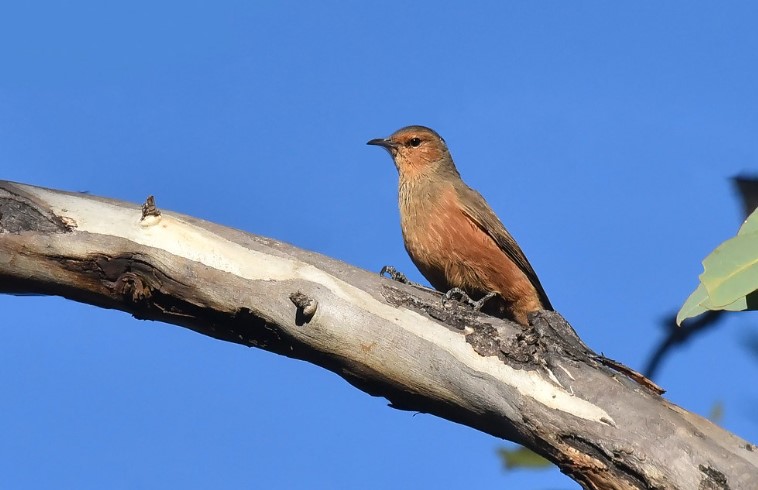
There are, however, no longer any Eyre Peninsula treecreepers present, being restricted to trees large enough and old enough to create nesting hollows on bull mallee trees. There was once a belief that Eyre Peninsula treecreepers were isolated from the western population by thousands of kilometers. As a result, it is now known that they are not completely connected through the Nullarbor Plain but rather through a thin strip of Mallee sand plains.
The Rufous Treecreeper hunts for insects by pecking and probing into cracks, crevices, and peeling bark from tree trunks and main branches. As it climbs upwards, it hops sharply with one foot in front of the other, flashing its tail laterally as it goes. Furthermore, it spends a great deal of time feeding on ants in the litter on the ground. Rather than occupying pairs of territories, Rufous Treecreepers often live in groups of three.
A male bird from the previous brood is probably the third bird. Feeding the nestlings is a shared responsibility among the three birds. They probably display the same courtship display as Brown Treecreepers. She crouches with quivering wings as the male faces her. Copulation follows when he bows in front of her and sidles behind her while still bowing.
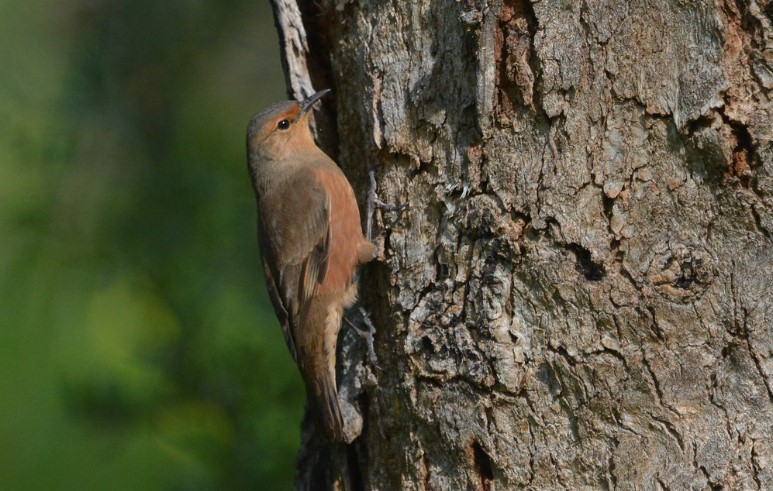
Rufous treecreeper calls are erratically repeated, with single, thin whistles and peeps that are higher pitched and less strident than brown treecreepers. A harsh churring is considered an alarm. The notes given by juveniles are low-pitched and slurred. Rufous treecreepers sing rapid, falling sequences of high-pitched whistles faster than brown treecreepers.
Male: The upper parts are plain ash-brown; the rump and neck are more rufous. Wings are grayer brown with a pale buff band across the flight feathers. Almost all feathers on the tail except the central pair are rufous-brown, with broad black subterminal bands. All faces, including brows, are rufous-core; the lords are dusky. It has a plain rufous-ochre throat and belly, with a gray wash across the breast and black freckles in the center of the lower throat; its undertail is pale rufous with broken black bars. The eyes are brown. Black is the color of the bill. There is a dusky color to the feet.
Female: as male but slightly smaller; rufous freckles instead of black on the center of the lower throat. The immature bird is slightly darker brown above, darker below, with a grey throat.
Beetles, cockroaches, termites, dragonflies, grasshoppers, insects, wasps, ants, and lepidopteran larvae make up its diet, as do beetles, cockroaches, termites, wasps, and bees. Aside from earthworms, centipedes, millipedes, and snails are other invertebrates that feed young. Seeds, nectar, and skinks (Scincidae) are occasionally eaten.
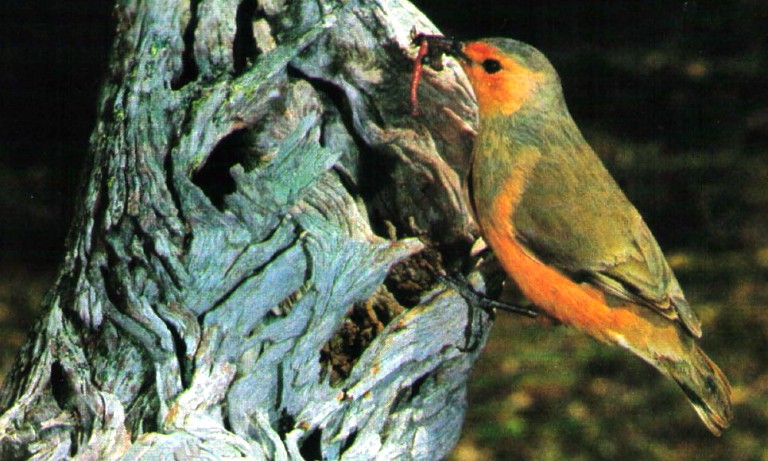
Breeding and nesting take place between July and November. Nests are made of dried grass and bark lined with fur, feathers, or plant down. The nest is placed on a hollow limb or trunk, occasionally on a hollow log. A rufous treecreeper lays one to four eggs, usually two or three. Eggs are pale pinkish-white, thickly marked with red-brown and dull purple. They are oval-shaped and about 24 x 19 mm in size. In good seasons, the bird probably raises two broods. The incubation period lasts about 17 to 18 days.
The Rufous treecreeper is found in the southwest, north around the Nullarbor Plain, and central Eyre Peninsula in Eucalypt woodland, open jarrah forest, and mallee. There are apparently two races of treecreepers on the Eyre Peninsula; they are consistently larger and more rufous than those found north of the Nullarbor. The bird is fairly common, so it is not globally threatened. Consequently, habitat destruction and fragmentation in agricultural regions of Western Australia are believed to have caused its decline or disappearance.
Read More: Black-tailed Treecreeper (Climacteris melanura)
Affiliate Product You May Be Interested In
-
The #1 Septic Tank Treatment On The Market
-
Sugar Defender: New Blood Sugar Formula Give the more energy and stable the sugar level
-
ProDentim is a melting probiotic candy that targets the microbiome, or oral flora, which is a rapidly expanding trend in dental health and soon to become a national preoccupation.
